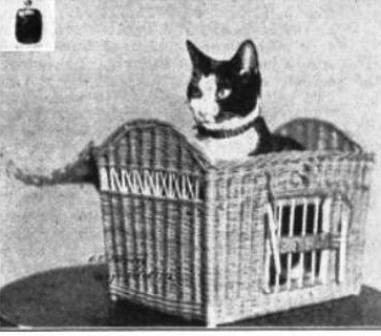
Many articles have been written about the iconic Equitable Building fire, but few mention Kaiser, the Equitable Fire Cat. I came across one small article published in 1914 that made brief mention of a cat, and I did some research. I’ll share my findings in this two-part cat tale of Old New York.
Philip Lights a Match
On January 9, 1912, just after 5 a.m., Philip O’Brien, an employee at the Café Savarin restaurant in the Equitable Life Building, lit the gas for a stove in his small office at 12 Pine Street, on the corner of Broadway.
The Café Savarin, which opened in 1888, occupied eight floors of the Equitable Building. Philip O’Brien’s office — described more like a small booth — was in the basement among the wine vaults and a receiving room for supplies. Not too far away were the steam elevators and dumb waiters that opened at each floor.
The basement was also a favorite hunting ground for Kaiser, a black and white cat that had been on rat patrol at the Equitable Building since about 1907.
On this morning, Philip O’Brien must have been distracted, because he admitted to throwing the still-lit match in the garbage. Less then 20 minutes later, his office was engulfed in flames. As Philip and other employees tried to extinguish the flames, the fire spread to the elevators and dumb waiters, giving it access to the entire Equitable Building.
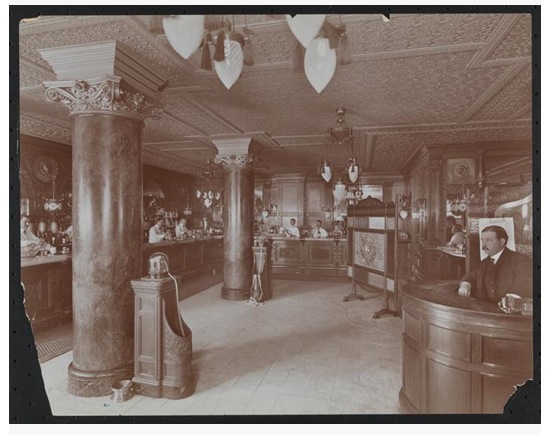
As the fire raged inside, the winds were gusting up to 68 miles an hour outside, making the sub-freezing temperatures even colder. Down in the basement Kaiser was just waking up to start a new day of rat catching.
The Equitable Building
Completed on May 1, 1870, the eight-story Equitable Building at 120 Broadway was considered the first skyscraper in New York City (it held the record for 14 years as the world’s largest building at 130 feet). It also featured the first public elevators in the city (it had 6 Otis elevators).
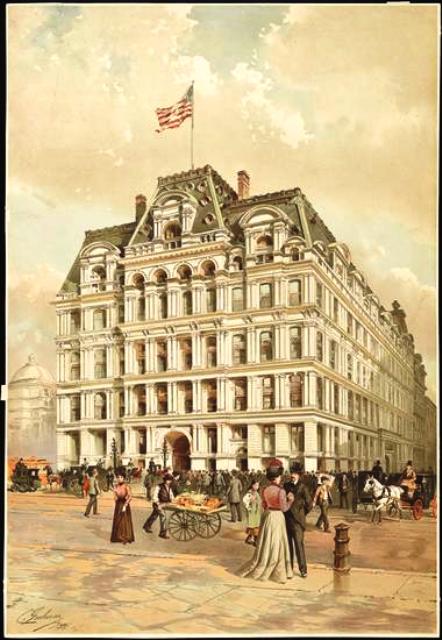
The building was home to some of the most well established banking, insurance, and law offices of the Gilded Age, such as the Hanover Fire Insurance Company, Mercantile Trust Company, Union Pacific, and the exclusive Lawyer’s Club. The main tenant and owner was the Equitable Life Assurance Society, hence the building was often called the Equitable Building or the Equitable Life Building.
In the basement of the Equitable Building, where Kaiser worked as head mouser, safe boxes and vaults were filled with several billion dollars worth of securities, stocks, and bonds.
In 1909, plans were filed to replace the building with the structure (below left), a 62-story building (909 feet) that would have been the second tallest man-made structure (the Eiffel Tower is 984 feet tall).
Those plans obviously fell through. I wonder if I’d even be telling this story if the new building had been constructed as planned.
The Great Fire of 1912
At 5:34 in the morning on January 9, the first fire alarm was pulled at Box 24 on the corner of Pine and Nassau streets. The first due responding fire companies (four engines, two ladders, two battalion chiefs, and the deputy chief of the First Division) arrived within minutes.
The first-in engine company, Engine 6, which was stationed at 113 Liberty Street, immediately stretched a line into the cellar and began operating.

At 5:55, Deputy Chief John Binns transmitted second and third alarms. This brought Chief of Department John Kenlon and Fire Commissioner Joseph Johnson to the scene.
With the fire raging out of control, Brooklyn fire companies were also called in to help – it was the first time in the history of the city’s fire department that Brooklyn responded to a Manhattan fire.
Police Commissioner Rhinelander Waldo (who had resigned as fire commissioner shortly after the deadly Triangle Shirtwaist Factory fire in 1911), ordered police officers to shut down the Brooklyn Bridge to allow the responding companies to get to the Equitable Building as fast as possible.
Nine engines, four hook and ladder trucks, a water tower, a searchlight engine, and numerous hose tenders rolled into the scene under the command of Brooklyn Fire Chief Thomas Lally.
Oblivious to all that was going on around her, Kaiser continued to patrol the basement for rats and mice, just like she’d done for the past five years.
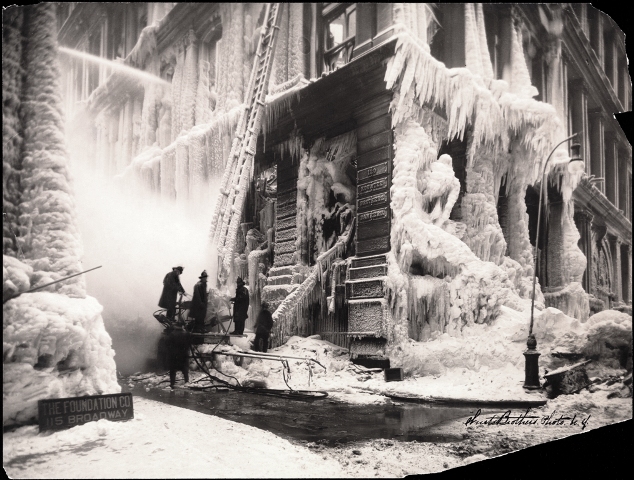
At about 6 a.m., the first of six casualties occurred when three waiters of Cafe Savarin were trapped on the mansard roof after trying to escape to the top floor by elevator. Firefighters tried to rescue them, but the ladders were three stories too short.
By the time the firefighters, including Fireman James F. Molloy of Engine 32, tried to rescue them with a rope-rifle shot from a neighboring building, the roof had begun to collapse. The trapped men jumped to their deaths onto Cedar Street.
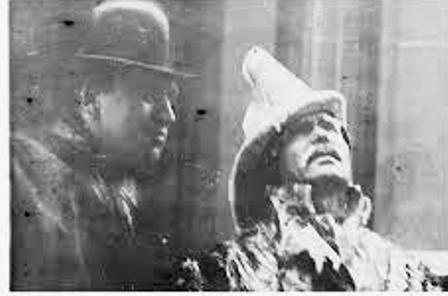
Fire Battalion Chief William Walsh and Captain Charles Bass of Engine 4 were also killed in the fire when the building caved in while they were doing a search on the fourth floor. Fireman James G. Brown of Ladder 1, who was with Walsh and Bass, survived after being hurled through a door into another wing of the building by the air pressure of the collapse. His efforts to retrieve Walsh and Bass from the building failed, not for lack of desperately trying.
At the time of the collapse, William Giblin, the president of the Mercantile Deposit Company, a clerk, and a watchmen became trapped while searching for important documents in a massive vault. Giblin and the clerk were rescued from the basement two hours later, when firefighters were finally able to hack through the two-inch steel bars in the windows. The watchman did not survive.
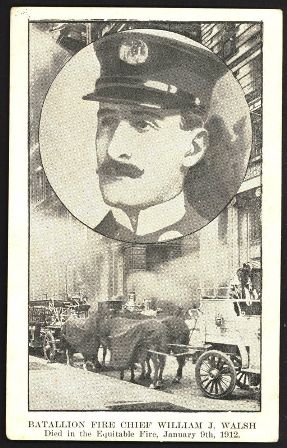
Kaiser the cat did not escape through the windows during this rescue, even as firefighters continued to pour water into the cellar to control the fire near the trapped men.
As the morning wore on, the temperatures dropped even more. Soon Broadway and nearby streets were coated with layers of ice, hoses were frozen solid, fire apparatuses were jammed, and the firemen were covered in icicles.
By the time the fire was finally contained at 9:30 a.m., the Equitable Building was an ice-covered tomb in ruins.
Recovery Efforts
On January 13, four days after the Equitable fire started, workers were finally able to crack through the ice and search for the body of Battalion Chief Walsh. It took many hours to free his frozen corpse from the ruins. The following day, the body of watchman William Campion, his hand still frozen to an iron bar on a window, was carefully removed from the cellar.
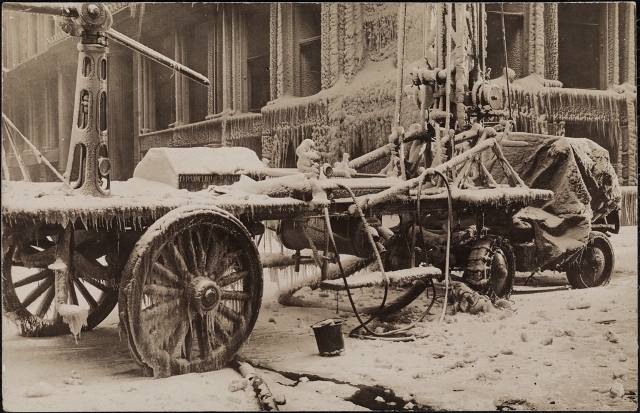
On January 25, 16 days after the fire started, workmen who were trying to salvage the contents of the cellar vaults and safe boxes found a “sad wreck of a cat” in the front part of the lower floor. Kaiser, who apparently had more than nine lives, had miraculously survived the conflagration.
In Part II of the Equitable Fire Cat tale, I’ll tell you more about Kaiser’s rescue. And in the final part of this story, I’ll tell you about another surprising animal rescue from the building and explore the history of the site where the old Equitable Life Building one stood before a man named Philip tossed a lit match into a rubbish can.
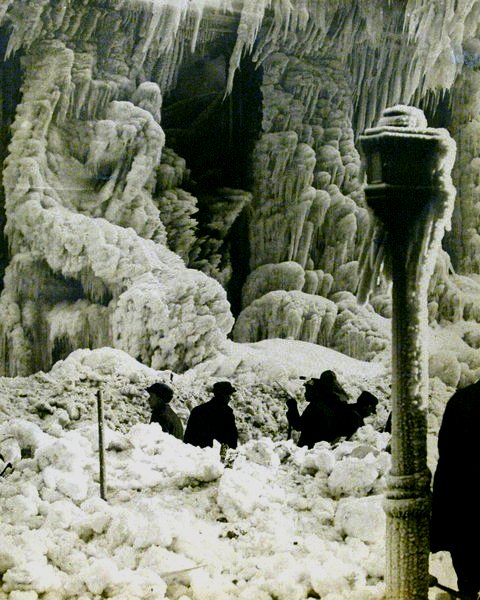
Click here for Part 2 and for Part 3 of the amazing cat story of Old New York.




Have you ever thought about publishing an ebook or guest authoring on other websites?
I have a blog based upon on the same topics you discuss and would love
to have you share some stories/information. I know my visitors would enjoy your work.
If you’re even remotely interested, feel free to send me an e-mail.
Thank you for contacting me. I’d love to compile all m stories into a book someday–that is my ultimate goal once I’m retired and no longer working 50 hours a week at my day job! And I do often guest author on other websites — particularly Untapped Cities. So I’d be interested in sharing my stories with your readers.
What is your website? Are you based in New York or the US? I look forward to reading your blog. (My email to you was returned undeliverable)